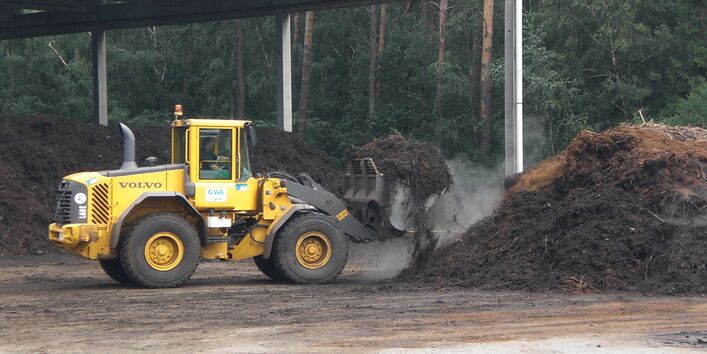Introduction
Composted organic waste from households and businesses, gardens and parks, food processing and agriculture, as well as sewage sludge from municipal sewage treatment plants, contains a whole range of valuable plant nutrients. Rich in nitrogen, phosphorus, potassium, and trace elements such as copper and zinc, it is used in agriculture as an organic fertilizer. In addition to plant nutrition, the organic material they contain stabilizes and/or improves the humus content of the soil. They can also reduce or replace the use of peat in horticulture and energy-intensive mineral fertilizers. This also helps to protect the climate. Above all, the agricultural use of phosphorus contained in wastewater and waste is to be viewed positively in light of the finite nature of this resource. However, since sewage sludge contains not only valuable components but also an unmanageable number of pollutants that are harmful to the environment and health, the risks of which cannot be assessed, the direct application of sewage sludge in agriculture should be discontinued as far as possible in the future and the phosphorus it contains should be recovered.
Environmental impact
In addition to nutrients, compost and, above all, sewage sludge also contain inorganic pollutants: toxic heavy metals such as lead, mercury, cadmium, and copper, as well as organic pollutants and foreign substances such as dioxins, polychlorinated biphenyls (PCBs), perfluorinated surfactants (PFTs), pharmaceutical residues, pathogens, nanoparticles, microplastics, and much more. When applied to the soil with fertilizers, these pollutants can accumulate in the soil and enter the food chain via plants. There is a risk to groundwater and surface water if the pollutants enter the surface water and groundwater through runoff or seepage from agricultural land. There are no estimates in Germany of the quantities of pollutants and heavy metals released into the environment from agriculturally used compost and sewage sludge. The risks to the environment and health are also difficult to assess, as the interactions and transformation processes of the pollutants are often unknown and monitoring options, especially for new substances, are often not available.
Fertilizer legislation
In order to minimize environmental hazards, only approved fertilizers may be used. Organic residual fertilizers such as compost and sewage sludge are regulated in accordance with the provisions of the Fertilizer Ordinance (DüMV), and the Bio Waste Ordinance (BioAbfV) and the Sewage Sludge Ordinance (AbfKlärV) must also be observed. From January 1, 2015, the limit values of the DüMV will also apply to organic fertilizers. Organic and mineral fertilizers may generally only be placed on the market if, when used properly, they are sufficiently effective as fertilizers and do not harm the fertility of the soil, the health of humans, animals, and plants, or endanger ecosystems. The Fertilizer Ordinance therefore sets minimum requirements for labeling, compliance with limit values for pollutants, and disease and plant hygiene. However, as many pollutants are not regulated and the risks cannot be assessed, some federal states have already completely abandoned the use of sewage sludge.
The maximum permissible content of pollutants and heavy metals is based on the precautionary values of the Federal Soil Protection and Contaminated Sites Ordinance. The BioAbfV and the AbfKlärV provide further differentiated restrictions, prohibitions, and requirements for the application of biowaste and sewage sludge on land used for agriculture and horticulture.
The quantities of biowaste and sewage sludge that may be applied are limited. For example, a maximum of five tons of dried sewage sludge per hectare may be applied within three years. The simultaneous application of fertilizers and biowaste is not permitted.
To prevent the transmission of pathogens, the use of sewage sludge in organic farming, on permanent grassland, in forestry, and in fruit and vegetable cultivation is generally prohibited.
The amended Sewage Sludge Ordinance (Ordinance on the Reorganization of Sewage Sludge Utilization, AbfKlärV), which came into force on October 3, 2017, regulates the obligation to recover phosphorus from sewage sludge that may no longer be applied to agricultural land. All sewage sludge with a phosphorus content of 20 grams or more per kilogram of dry matter must undergo phosphorus recovery by 2029 at the latest. Recovery can take place directly at the sewage treatment plant from sewage sludge or sludge water, but also from sewage sludge ash after mono-incineration. No specific technologies for phosphorus recovery are specified. From 2029, soil-related utilization of sewage sludge will only be permitted from wastewater treatment plants with a capacity of up to 100,000 population equivalents, and from 2032 only from plants with a capacity of up to 50,000 population equivalents.
In addition to the legal requirements and specifications for the use of organic residual fertilizers, farmers must comply with the principles of good professional practice in accordance with the Fertilizer Ordinance (DüV), as is the case with all other fertilizers.
